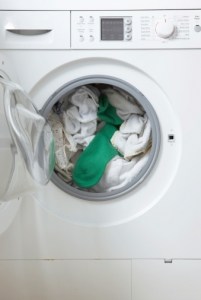Laundry Detergent Pods Poisoning Cases Involving Young Children on the Rise
 You may remember hearing about the tragic cases of small children getting poisoned when they mistook their mom’s laundry detergent pods for candy. Laundry pods are small, brightly colored packets of clear plastic and filled with highly concentrated laundry soap and fabric softener. Children are biting into them because they think it looks like an appealing piece of candy, but these pods can cause serious injury and even death, says the National Capital Poison Center.
You may remember hearing about the tragic cases of small children getting poisoned when they mistook their mom’s laundry detergent pods for candy. Laundry pods are small, brightly colored packets of clear plastic and filled with highly concentrated laundry soap and fabric softener. Children are biting into them because they think it looks like an appealing piece of candy, but these pods can cause serious injury and even death, says the National Capital Poison Center.
A story in Reuters reports that kids’ exposure to poisoning by laundry packets actually increased between 2013 and 2014. Exposure to laundry pods specifically involves more serious dangers such as comas, fluid in the lungs, breathing problems and death. The senior author of the study, Dr. Gary A. Smith, who is the director of the Center for Injury Research and Policy at Nationwide Children’s Hospital in Columbus, Ohio, said that parents and child caregivers need to consider whether the minor potential convenience of laundry detergent packets is worth the poisoning risk to young children.
Dr. Smith’s research team looked at data from the National Poison Data System for more than 62,000 children under the age of six who were exposed to laundry and dishwasher detergents in 2013 and 2014. The study concluded that more than half of these cases involved laundry pods. The Wall Street Journal reports that at least seven people have died after biting into laundry packets with four of those fatalities taking place last year and one earlier this year. Last year, poison control centers logged 13,314 cases of kids’ exposure to laundry packets, which is up 20 percent from 2013 according to a national database. Since the beginning of 2016, U.S. poison control centers have reported that accidental exposures in children under the age of six years old have been occurring at the rate of about 30 each day.
Medical experts are not sure why these packets are so much more harmful than other detergents. Kids have been getting their hands on laundry soap and dishwasher detergent for decades, but nine have cause the significant injuries that laundry pods cause such as severe vomiting, depression of the central nervous system, and breathing problems.
Since the initial poisoning and death cases emerged, product manufacturers have taken steps to change the packaging by making the containers opaque, making the packaging more child-resistant, adding more stringent warning labels and warning parents to keep the product out of the reach of young children, the products themselves are still the same. They still look like shiny candy and they are still incredibly dangerous.
Proctor & Gamble, which boasts an approximate 78 percent share of the laundry pod market, is now defending itself against lawsuits filed by families of children who have died or been poisoned by their products. The company says in court documents that the laundry pods are reasonably safe for normal use, and that the children’s poisonings were a result of negligence on the part of their parents.
The Wall Street Journal story reports that a few U.S. lawmakers are making an effort to impose tougher safety standards on the manufacturers of laundry pods by requiring the Consumer Product Safety Commission to establish new rules that would force the companies to make changes to the product that would prevent so many accidental poisonings.

Christopher T. Nace works in all practice areas of the firm, including medical malpractice, birth injury, drug and product liability, motor vehicle accidents, wrongful death, and other negligence and personal injury matters.
Read more about Christopher T. Nace.
